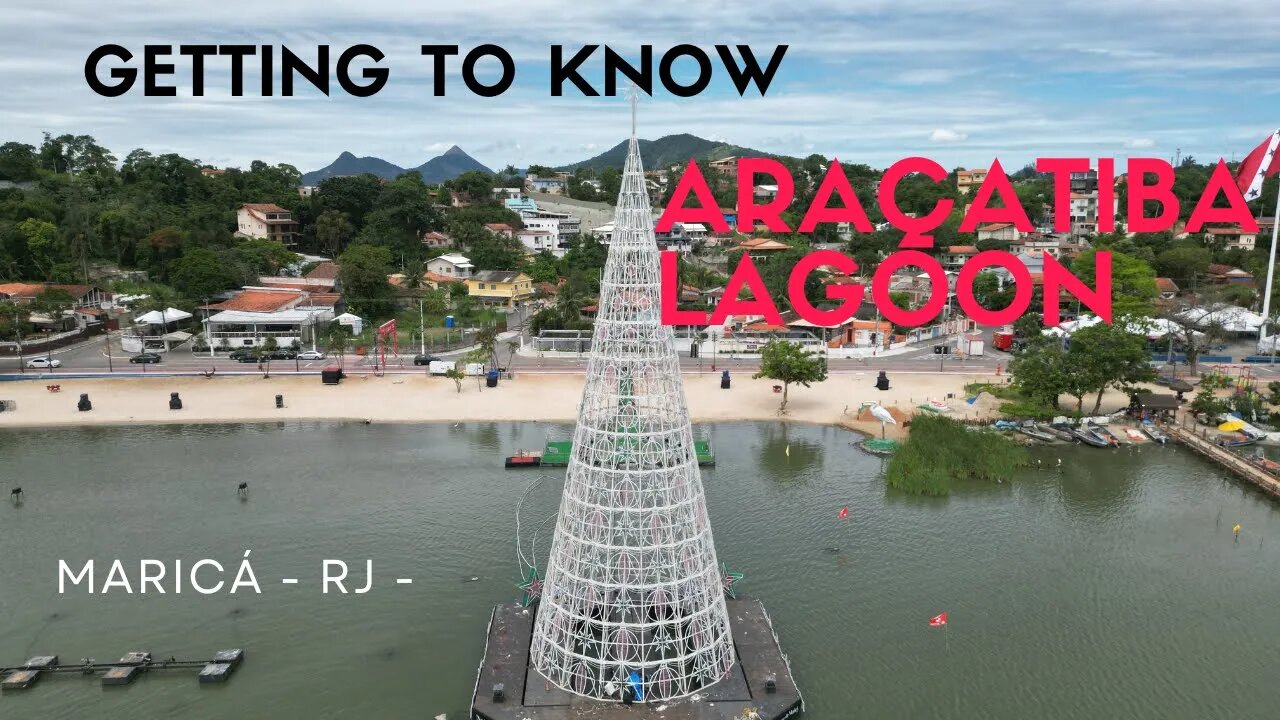Premium Only Content

Araçatiba Lagoon - City: Maricá - State: Rio de Janeiro -(RJ) - Beaches in Brazil -
Hello channel friends.
Continuing our journey through the lakes region, in the state of rio de janeiro, we are in the municipality of Maricá, 60 km from the capital and bordering Niterói, São Gonçalo, Itaboraí, Saquarema and Tanguá. The city's economy is strongly based on oil production, since its coastline is in front of the producing basins. The Lula field, explored by Petrobrás, is the main responsible for revenues from royalties to the public coffers, making the city one of the ones that most receive these revenues in the state. Today we are going to visit Lagoa de Araçatiba and its new shore, a meeting point for the population, tourists and visitors. Want to get to know her better? Come with me.
The view of Lagoa de Araçatiba has always been considered one of the most beautiful landscapes in the municipality. The postcard, in the Center, has a tradition of serving as a setting for outdoor sports, especially hiking and running. However, according to the regulars themselves, what was already beautiful became incredible, after the waterfront revitalization work, which included paving the road and the boardwalk, gym, sculptures, wooden benches, sand courts for volleyball and footvolley practices, as well as special lighting. Everything on the new waterfront is conducive to meeting, sociability, leisure and relaxation for children and adults. On the boardwalk, pedestrians, cyclists, skaters and skaters democratically share the same lane, admire the sunset and look for the best photo – it is certainly the currently most photographed place in the city. Meanwhile, on the sands, volleyball, footvolleyball and yoga, each in its own space, complete the atmosphere.
After the revitalization of the waterfront, Araçatiba became one of the best points in Maricá. The space has about 5 illuminated and urbanized kilometers, where there are sports equipment for the practice of the most diverse sports, such as beach volleyball, running, footvolley, among others. Along the waterfront, you can find sculptures, an outdoor gym, restaurants and inns. Here you can also observe several species of birds such as burrowing owls. Sunset here is a must. A curiosity that happened here - In 1584, the Jesuit priest José de Anchieta, carried out on these shores the so-called "Miraculous fishing", anticipating to the Indians which fish they would bring to the boat in a certain region of the lagoon. Fishing was so abundant and varied that the beach was crowded with men to salt so many fish. If you are looking for that quiet place, where you can relax, connect with nature and still be presented with beautiful landscapes, discover this little piece of paradise!
The name “Araçatiba” is very curious and comes from the Tupi indigenous language. where ARAÇÁ means “fruit that has eyes” and TIBA means “a lot”. Lagoa de Araçatiba is part of the Lagoon System of Maricá, before all the lagoons, which are one, were simply called Lagoa de Maricá. With the drop in the level of this lagoon and the population growth, names were given to certain parts of this lagoon. Lagoa de Araçatiba is one of the main ones and bathes the APA* of Restinga de Maricá. The “Lagoa Viva” program, created by the Municipality of Maricá to revitalize the city's lakes, celebrates the 200% increase in the fauna and flora species of Lagoa de Araçatiba. The program aims to promote the renewal of the ecosystem, the elimination of bad smells and the clarity of the water in the lagoon, using sanitation techniques without chemicals, through the use of bioinputs without harmful effects on the ecosystem and people. The improvement of water quality and the revitalization process of Lagoa de Araçatiba has contributed to attract bathers and practitioners of sports such as canoeing, stand up paddle and kayaking. The process happens as follows: the local ecosystem brings together three types of microorganisms, the good, harmful and neutral. Bioinputs will enhance the neutral microorganisms, 'training' them to work together with the positive ones, resulting in the progressive revitalization of the ecosystem. The waste from the lakes will then be transformed into new waste, which will serve as food for fish, shrimp and birds, reactivating the local chain.
-
 LIVE
LIVE
STARM1X16
3 hours agoFriday Night Fortnite
92 watching -
 29:51
29:51
Afshin Rattansi's Going Underground
19 hours agoJimmy Dore on Ukraine & WW3: Biden Wants a War that Trump CAN’T Stop, ONLY Hope is Putin’s Restraint
56.7K18 -
 DVR
DVR
Fresh and Fit
5 hours agoExposing WHO Killed JFK w/ Cory Hughes & Tommy Sotomayor
72.6K24 -
 LIVE
LIVE
RanchGirlPlays
5 hours ago🔴 Red Dead Redemption: Let's go help De Santa 🤠
191 watching -
 LIVE
LIVE
Man in America
11 hours agoWHAT?! Trump & the Fed are DISMANTLING the Global Banking Cartel!? w/ Tom Luongo
2,210 watching -
 LIVE
LIVE
HELMET FIRE
1 hour agoDEADROP IS BACK!
125 watching -
 LIVE
LIVE
I_Came_With_Fire_Podcast
7 hours agoLive Fire (No Exercise) with DAN NUNN!!!
243 watching -
 1:57:20
1:57:20
Glenn Greenwald
7 hours agoBiden's Escalation Of The War In Ukraine With Scott Horton; Lee Fang On The Junk Food Industry Sabotaging RFK Jr.'s Plans & The Gaetz Situation | SYSTEM UPDATE #371
77K79 -
 LIVE
LIVE
Toitle
2 hours agoLet's Game | TOITLE HEADS, POKE OUT | WE BE GRINDIN
136 watching -
 LIVE
LIVE
Pepkilla
3 hours agoBlack ops 6 camo grinding ~
239 watching